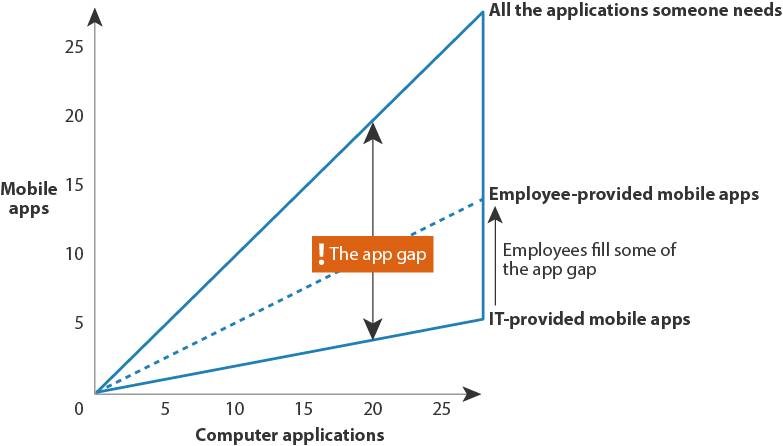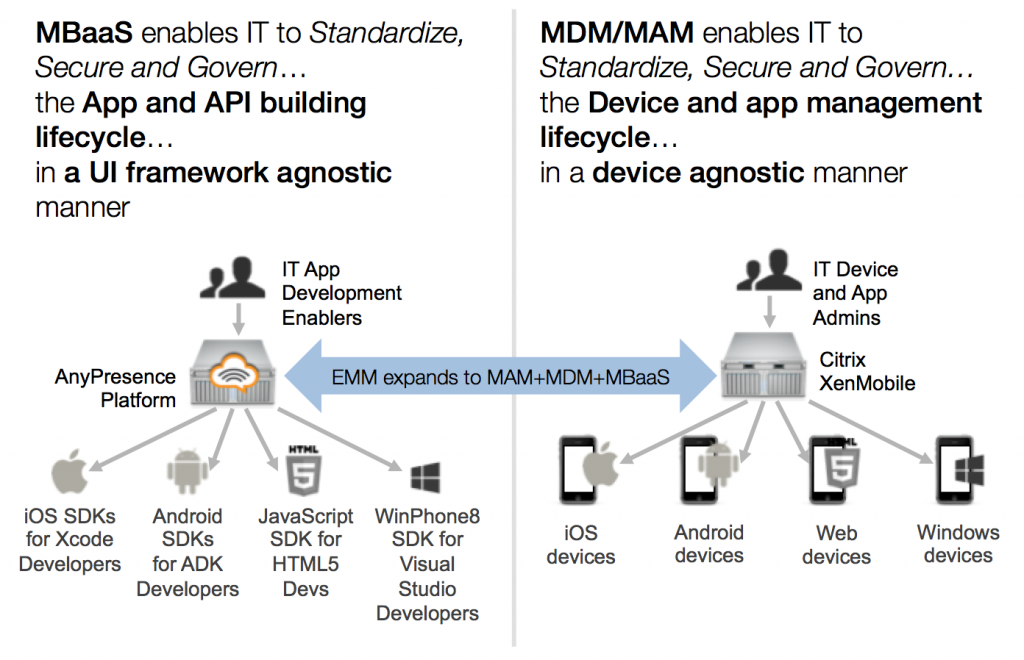Originally published on the Citrix Blog on May 11, 2015
Over the past few years, smartphone proliferation has impacted the enterprise with employees using either personal or company-issued devices to access enterprise resources. In response, IT organizations have spent the vast majority of their enterprise mobility time and budget focused on securing devices and ensuring corporate data is protected when those devices are lost or stolen, resulting in widespread adoption of Mobile Device Management (MDM) solutions as the first component of an Enterprise Mobility Management (EMM) strategy.
Once the devices were secure, focus eventually shifted from managing smartphones to managing smartphone apps. Mobile Application Management (MAM) capabilities became another important component of EMM, to help IT deploy and manage enterprise mobile apps on both company-owned and personal devices.
While IT was focused on securing mobile devices and the apps that run on them, there was a massive shift underway in other parts of the enterprise: line of business organizations were responding to the demand for cross-platform apps to serve mobile channel requirements. These organizations were facing time-to-market pressure to get apps built quickly, and either developed them organically without IT or outsourced development to third parties. This pressure has not abated, and the complexity of app requirements continues to grow as the number of endpoints becomes even more fragmented with wearables and other Internet of Things (IoT) devices. As a result, a significant “app gap” has emerged, where the need for business process mobilization with enterprise apps has outpaced an organization’s development bandwidth (see fig 1).

Figure 1: The App Gap (Forrester)
IT is now faced with a unique opportunity to play an important role in the evolution of EMM. Rather than create barriers to app development through burdensome restrictions, or scrambling to keep up with the app roadmap, IT can provide value-added assistance to line of business organizations by enabling secure mobile app development. This can be accomplished by expanding EMM to include non-proprietary mobile backend services (or MBaaS) capabilities that provide standardized, secure data access to source IT systems and software development kits (SDKs) that can significantly reduce the time it takes to build cross-platform enterprise mobile apps.

Figure 2: EMM expands to include MDM, MAM and MBaaS
It is important to note that this is not just about standardization of data access via traditional middleware or service bus layers. Rather, EMM is expanding to include MBaaS capabilities that allow for:
- abstraction of multiple data sources
- secure, multi-point integration and authentication
- contextual responses
- mobile services (push notifications, SMS)
- app-specific business rules and role-based access (server side logic)
- client-side acceleration (caching, native classes)
- full source code access and portability across MBaaS and SDK layers
These capabilities ensure that IT can simultaneously govern and augment mobile app development processes, without imposing any restrictions on which front-end tools or frameworks the developers can use. Furthermore, with next-generation EMM solutions like those from Citrix XenMobile and AnyPresence, IT can go even further to enable app development for the post-PC era of smartphones and tablets, but also establish a strong digital infrastructure foundation for the inevitable adoption of wearables, IoT, and other emerging channels.